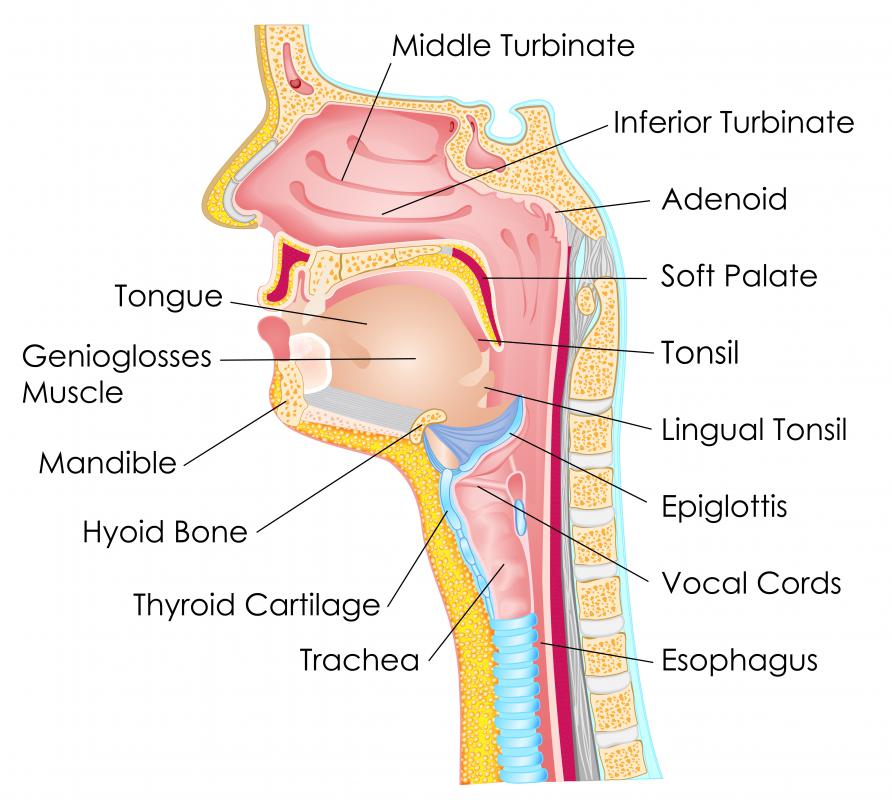At WiseGEEK, we're committed to delivering accurate, trustworthy information. Our expert-authored content is rigorously fact-checked and sourced from credible authorities. Discover how we uphold the highest standards in providing you with reliable knowledge.
What Is the Mandibular Foramen?
The mandibular foramen is an opening in the lower jaw, or mandible. It functions as the entrance for blood vessels and the mandibular nerve. The inferior alveolar nerve and the inferior alveolar artery also enter through the mandibular foramen.
Specifically, the mandibular foramen is located at the ramus. Also known as the "ramus of the mandible" or "perpendicular portion of the mandible," it has a quadrilateral shape and covers the back of the lower jaw. The ramus has two surfaces: the medial, or middle, surface and the lateral surface, which bears the mandibular foramen that appears around its center. This area also has the coronoid and condyloid processes, which are separated by the mandibular notch.

The inferior alveolar nerve and the inferior alveolar artery enter the lower jaw through the mandibular foramen. This area of passage is why the term "alveolar" is applied to both, as one meaning of the term indicates the area near the jaw ridge. Each structure has a distinctive function at the mandible.
Also known as the inferior dental nerve, the inferior alveolar artery is one of the branches of the mandibular nerve. This structure is the biggest of the branches of the trigeminal nerve, or fifth cranial nerve. The trigeminal nerve, sometimes abbreviated CN5, functions as the face's main source of innervation. It also is responsible for several motor functions, including biting and chewing.

Prior to entrance via the mandibular foramen, a branch of the inferior alveolar nerve called the mylohyoid nerve innervates the mylohyoid and digastric muscles. These muscles are found between the mandible and hyoid bone at the neck and below the lower jaw, respectively. Upon entry, the inferior alveolar nerve travels through the mandibular canal to become part of a sensory network called the inferior dental plexus, which innervates the lower teeth and gums; the inferior alveolar nerve earns its alternate term "inferior dental nerve" for this reason. Also, it branches out as the mental nerve and enters the mental foramen to innervate the chin and lower lip.
As for the inferior alveolar artery, it enters the mandibular foramen with the inferior alveolar nerve and travels along the mandibular canal. Similar to the nerve, it is also called the inferior dental artery, but it supplies the lower jaw with blood instead of innervation. When it reaches the premolar teeth, it splits into the incisor branch and the mental branch. The incisor branch — so named because of its path right below the incisor teeth — is responsible for supplying blood to the teeth and gums. The mental branch, meanwhile, follows the mental nerve through the mental foramen to the chin.
AS FEATURED ON:
AS FEATURED ON:












Discuss this Article
Post your comments